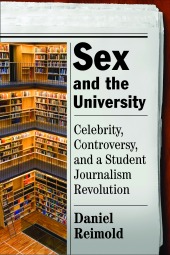Every major breaking story nowadays comes with a seemingly instant meta-analysis of how new media have fared while impacting the story’s coverage. Case in point: a CNN piece about the Michael Jackson death gossip-mongering news coverage.
—
My take: This is NOT a story that symbolizes new media’s shining greatness. In fact, they are hardly helping matters at all. Now, in fairness, there are some positives. Some of the more visual career timelines and discographies have caught my eye and are serving as stellar complements to the basic news pieces, especially impressive given how little lead time there was to put them together. The endless videos available of every Jackson utterance, moonwalk, and nose alteration have also been helpful at times for context and in quiet moments simply for entertainment/remembrance sake. And obviously, the Internet proved useful for the newsibodies and Jackson fans to commiserate and find out the first death details as they spilled out.
—
But that’s it. So the story broke on TMZ, and many people followed it there and on PerezHilton.com. Who cares? Those two sites are part of the media establishment now anyway (whether the oldies like it or not). TMZ had the story a few minutes before everyone else, but this is NOT a story in which that sort of scoop really matters at all. I mean, c’mon, do people other than TMZ junkies and media watchers even know or care that it was the site that first broke the story?
—
Otherwise, TMZ has basically been doing one-source reporting updates on everything from Madonna’s reaction to the initial autopsy announcement. (And, if you notice, Perez Hilton is basically parroting TMZ with the same news updates and with only an implicit shout-out to TMZ for doing the actual ‘reporting’ via a link to its updates in his posts.) First, TMZ is the ONLY non-mainstream news outlet providing any credible, worthwhile details, making any citizen journalist, all-atwitter-over-Twitter or blogosphere-for-President arguments moot. TMZ may not be the BIG media of yesteryear, but now, with its success, it has come to embody the same one-to-many media model we were raised on i.e. OLD not new.
—
And while, OK, it’s kind of cool that TMZ is doing some solid scoop reporting in real time, as it happens, as I go through the content (like most people) once or twice a day, I can’t help but feel like an old-style news summary would save me a lot of trouble scrolling and putting together the pieces into a coherent larger picture.
—
The problem with the Jackson story for new media: It’s NOT a continuing saga, unlike the Iran controversy or even something like Jon & Kate’s drama. It’s essentially one story (umm, he’s dead) with new (and old) media outlets attempting to spotlight a TON of fairly minor side stories around it to keep our interest (and keep up their Web traffic).
—
I’ve got new media coursing through my veins but, yes, I’m saying it: Give me a once-a-day update on all-things-Jackson in the style of an old-world newspaper report! Why? Because at this point, I’m already (ALREADY?!) sick of the endless updates. And this is another ill effect of new media’s obsessive coverage: the instant overexposure, and subsequent way-too-soon public weariness, of whatever the new media outlets and blogosphere set their common sights upon.
—
The real-time updating is also causing problems, most horrifically the false autopsy report about Jackson being bald and speckled with drug needles (a story that I only just minutes ago corrected someone about and probably others still believe is true). Some Internet prankster got it going, it hit TMZ and others, and boom, it was fact. CNN mentioned other rumors that ran rampant immediately after his death, including that he was murdered and that Jeff Goldblum and Harrison Ford had also perished.
—
Fortunately, both stars are OK, and new media of course are also here to stay. My instant analysis of their Jackson death coverage: a tiny bit of “Thriller” with some definite “Bad” and “Smooth Criminal” activities thrown into the mix.







